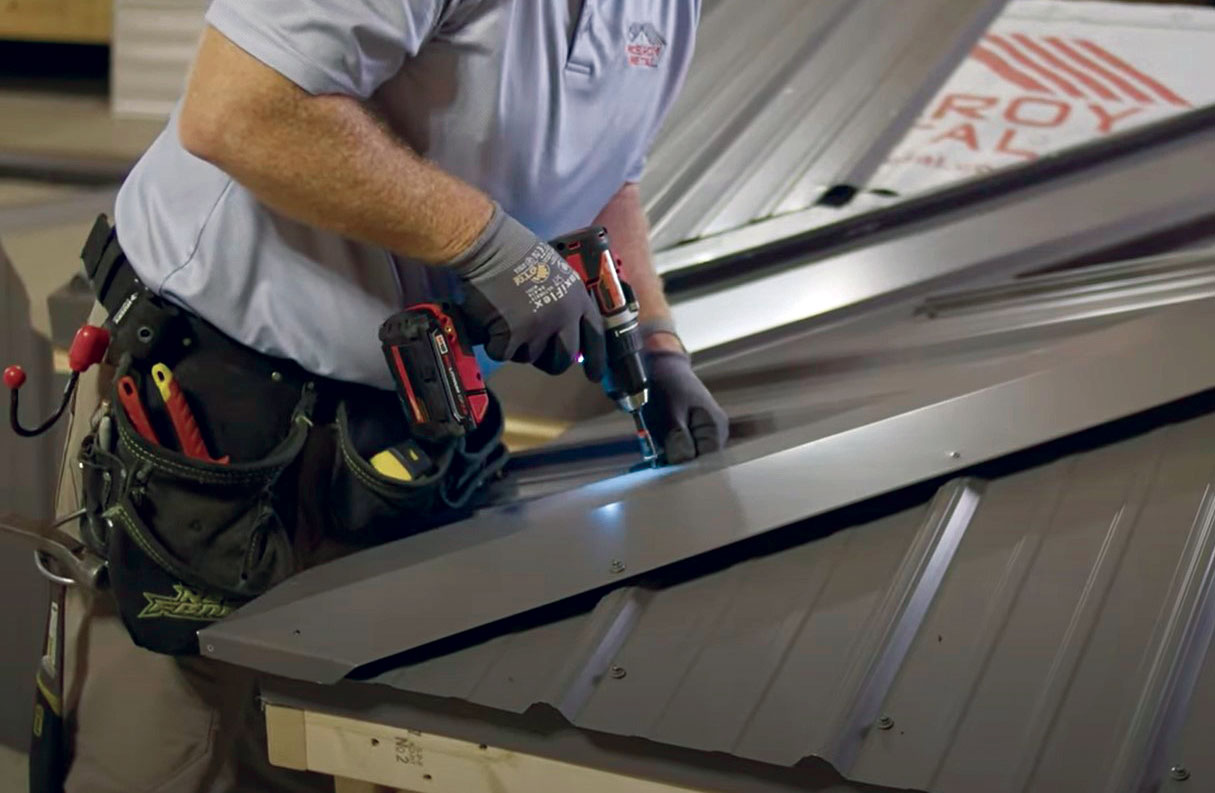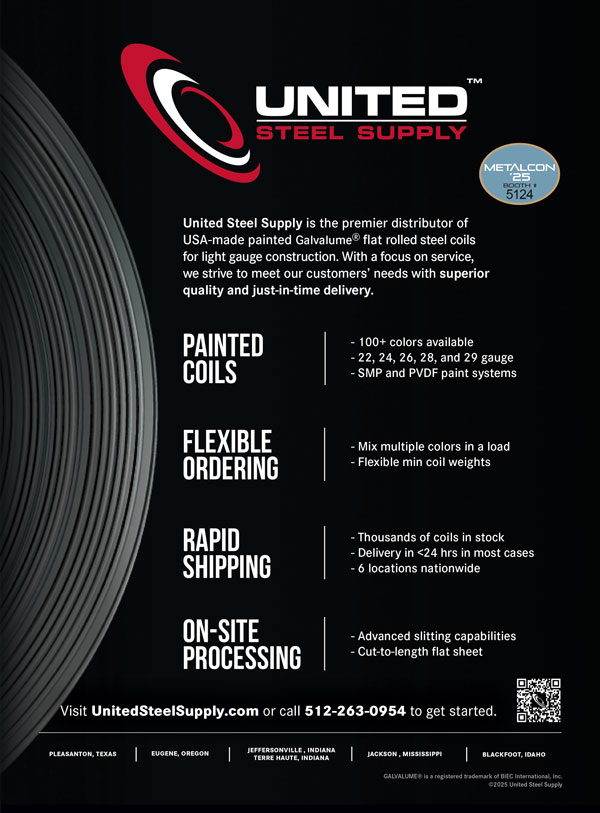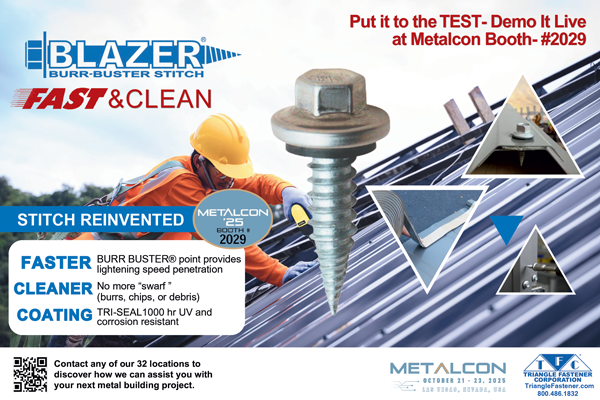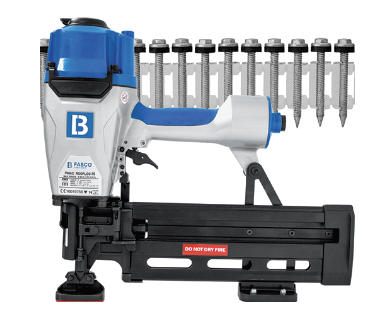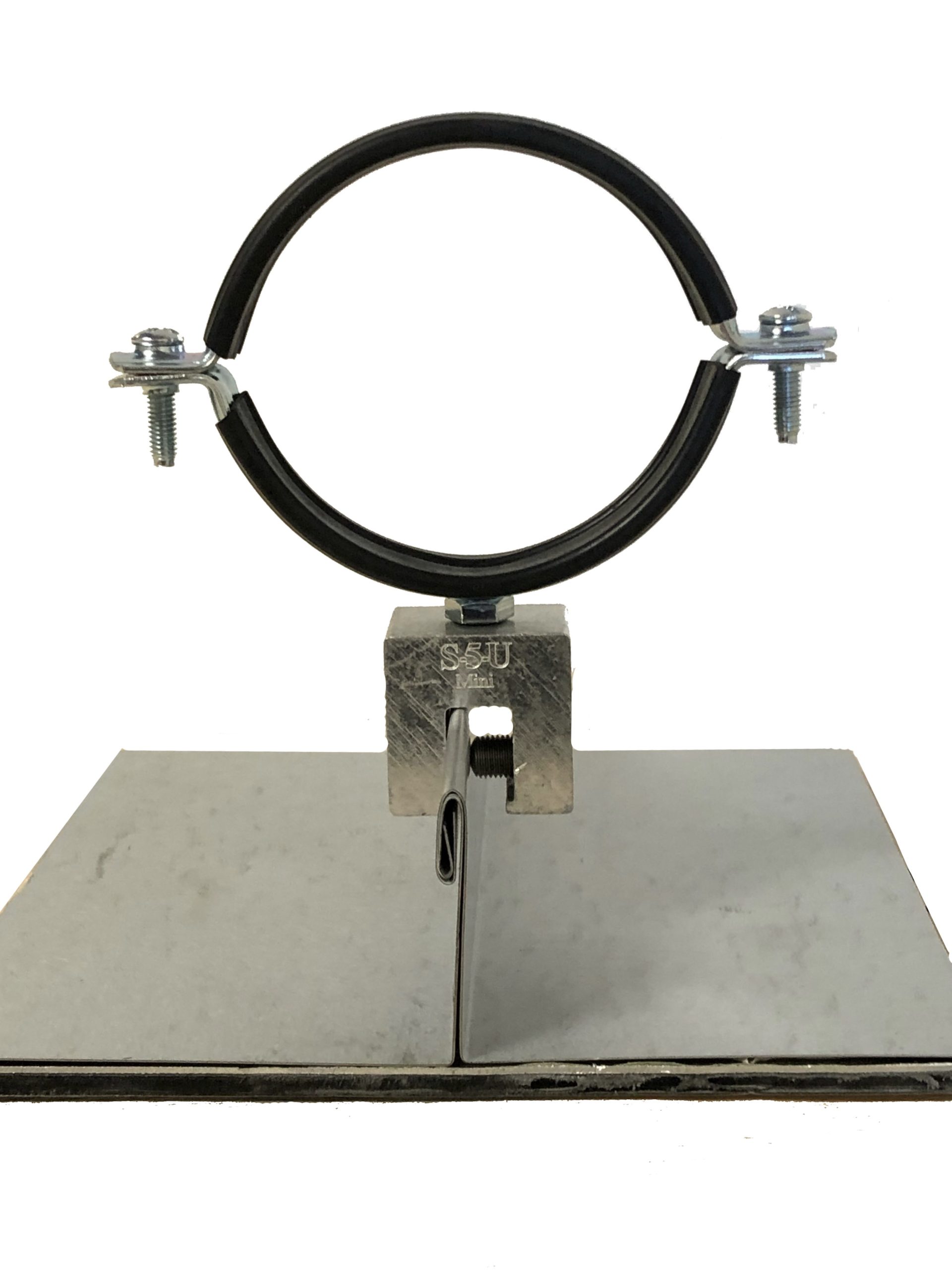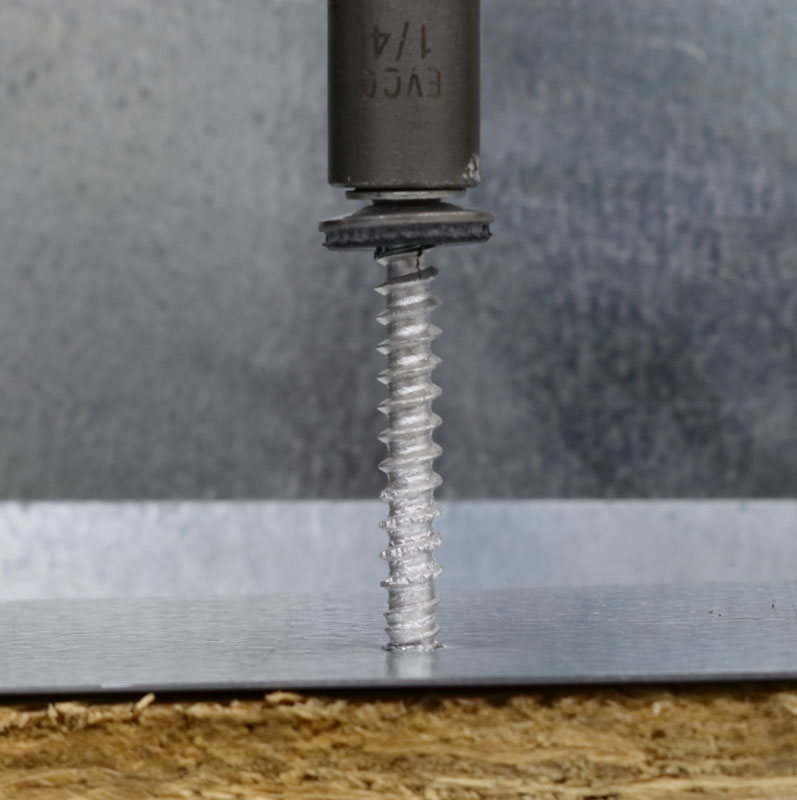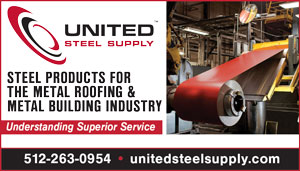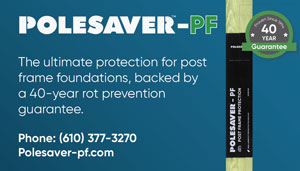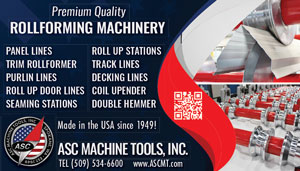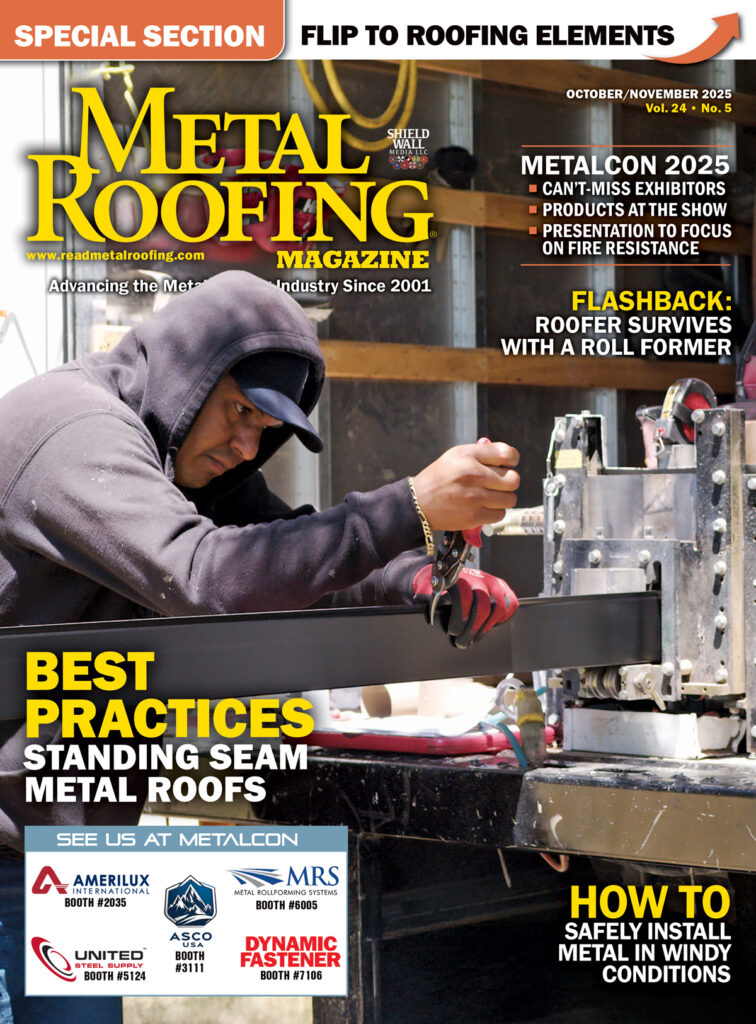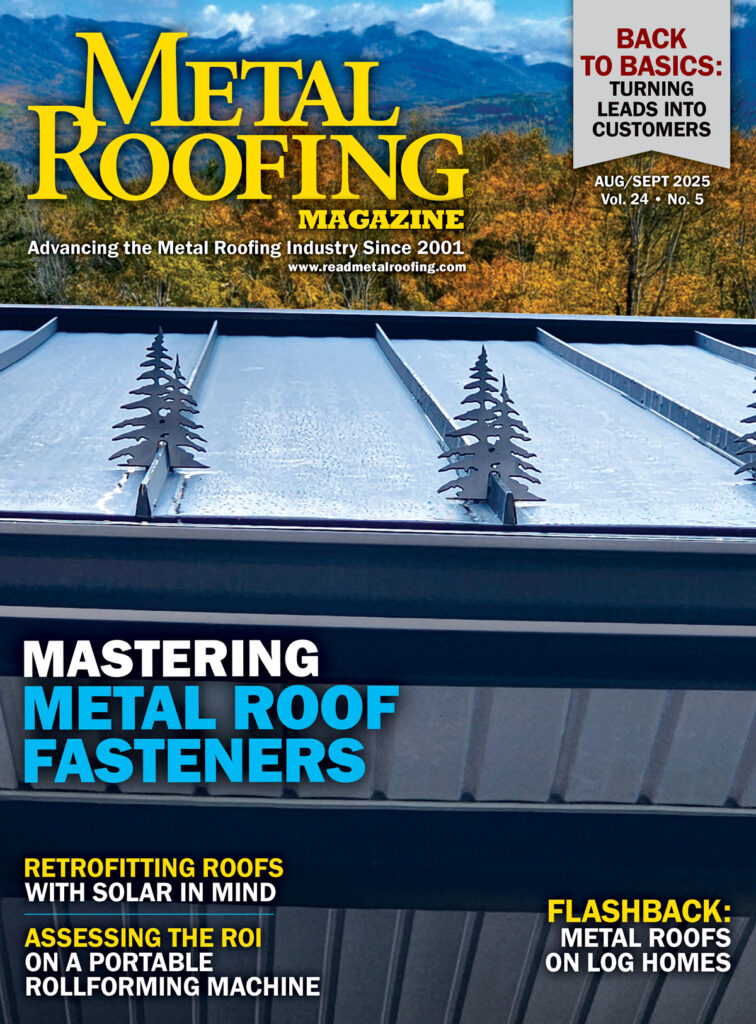By Karen Knapstein
In a perfect world, a roofer shouldn’t have to determine the correct fasteners for a project. They should be properly specified in the project plans, drawings or instructions for the project. If the plans are not as complete as hoped for or plans change, there are four questions you can ask that lead you to the best fastener for the situation:
• What does the fastener go through?
• What does the fastener go into?
• What environment will the fastener live in?
• And what forces does the fastener need to resist?
The answers to these questions along with the technical data typically provided by fastener suppliers help determine the point style and size, the length of the fastener, the head style, the material, the finish of the fastener and the size or diameter. Here are some tips and tricks provided by suppliers and manufacturers regarding fastener selection and installation.
Fastener Choice
In most applications, the ultimate substrate and/or what is being attached to the ultimate substrate will help determine the type of fastener required. Key things to keep in mind when selecting an appropriate fastener for the job are composition, point, thread pattern, shank size, washer, and warranty.
Using incompatible materials or components is one of the most common mistakes made while attaching metal roof panels. Using mismatched fasteners or sealants can compromise the performance and longevity of the metal roof system. In applications where dissimilar metals are being attached, whether aluminum to steel or steel to aluminum, the use of standard carbon steel fasteners should be avoided. In these applications, a bimetal or 300 series stainless steel self-driller should be used instead of carbon steel.
For all-steel buildings (metal-to-metal applications), the fastener should have a self-drilling point that completely drills the steel panel and purlin before any threads engage in the metal. Fasteners with a hex washer head for both wood and steel applications will be assembled with a bonded EPDM sealing washer. The thickness of the substrate will dictate the type of point and diameter that is correct.
For exposed fastener metal-to-wood applications, the most common point style is a sharp point that will penetrate the steel and hold securely in the wood. For less dense wood substrates like OSB or thin plywood, a fastener with a larger diameter and coarse thread will hold better and is less susceptible to strip out than one with a fine thread, which is most commonly used in structural lumber. Go bigger than the standard #10 shank when replacing screws or using them for plywood or OSB applications.
Some screws have oversized washers for replacement applications. Two washer options are available for metal-to-metal screws: bonded and cup head. (This is primarily based on user preference.) Ensure all fastener holes are sealed with compatible sealant to maintain a watertight seal.
Other considerations include the environment, which dictates the level of corrosion resistance needed. If a carbon steel fastener is sufficient, then specify carbon steel fasteners with a 1,000-hour salt spray coating. Discern if a premium head style such as zinc or stainless steel is required, or if a full stainless-steel head and body are necessary. Premium fasteners are available with a long-life coating, which adds to the corrosion resistance. Some manufacturers cut corners by providing an inferior zinc-plated screw body, even in conjunction with their premium, expensive capped-head. Although an inferior zinc-plated screw will save the contractor on the initial cost, a feeble zinc-plated body will perform poorly in a salt chamber and — far too often — on the jobsite. Mechanical galvanizing is usually a thicker zinc layer than electroplating, which makes for a more durable coating.
Another quality concern is about “hydrogen embrittlement relief.” If a supplier says their screws are manufactured with that quality enhancement, get it in writing.
Furthermore, the longevity of the fastener should match the longevity of the roof panel. A long-life fastener that will not rust is recommended for coastal or heavy industrial environments and for roof panels that carry a 40-year (or more) paint warranty against red rust.
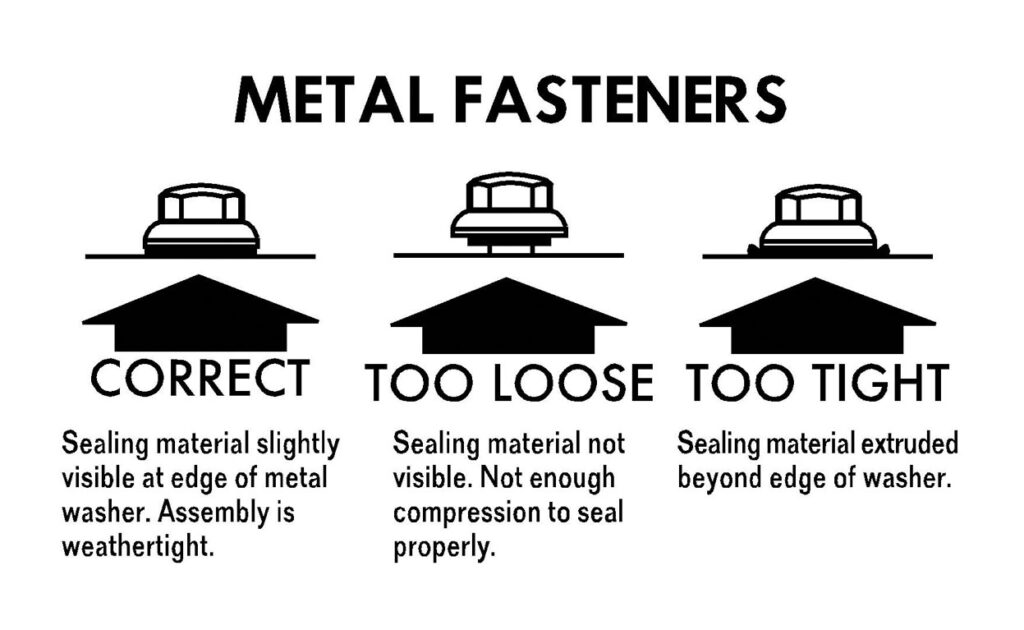
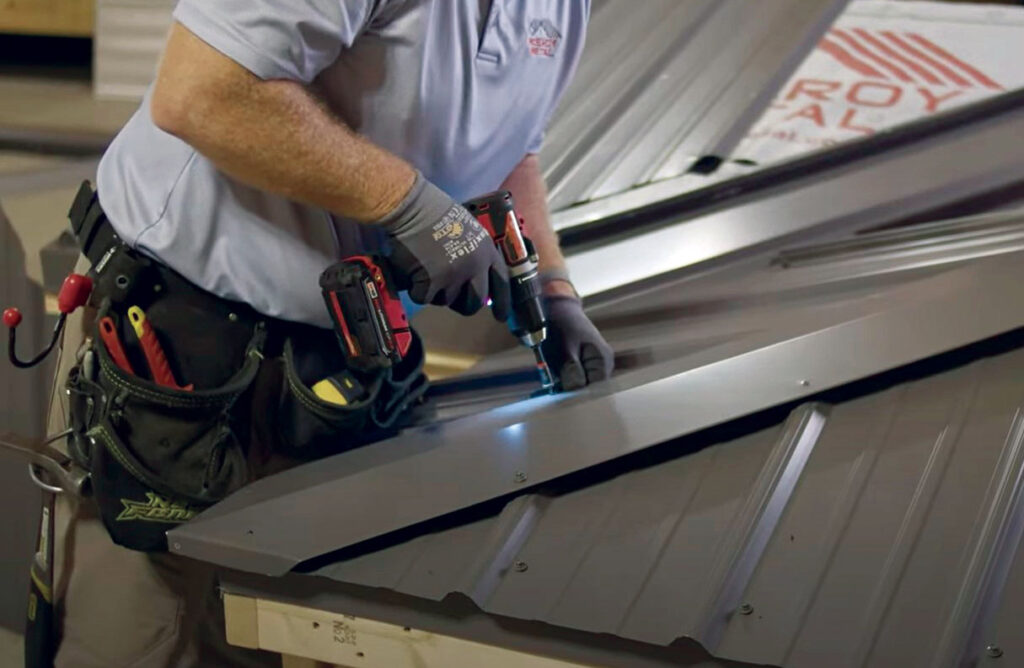
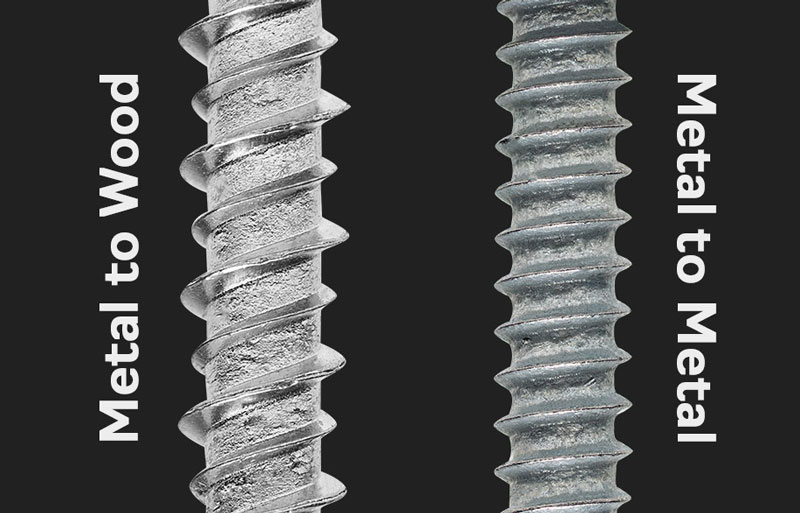
Installation
When installing self-drilling fasteners, it’s critical to use a proper installation tool. Use a screw gun, either battery-operated or corded, with torque control or a depth-sensing nosepiece to prevent over-torqued and under-torqued screws. A drill, while not ideal, can be used if it has a clutch mechanism. On through-fastened panels, over-torqued fasteners can break, damage the washers, deform or damage the panels and lead to potential leaks and stress points. If the rubber washer is bulging out from beneath the screw head, the screw is over driven.
Control is king. Screws should be driven straight and with a proper amount of torque. Install fasteners perpendicular to the work surface. No fastener is installed perfectly straight and they tend to follow the angle of the thread, but excessive angles can cause issues and look sloppy. Don’t stab the fastener into the surface or apply too much pressure. Don’t spin the fastener too fast; let the drill point do the work. Sometimes on tougher or thicker materials, pulsing the trigger of the screw gun a few times helps the drill point cool off or clear metal chips allowing the drill point to cut better.
Don’t use impact tools to install fasteners. Using impact tools to install screws can cause the head to separate from the body due to the high torque and impulse generated by the tool. Impact guns may also spin at a higher RPM which causes the screw’s drill point to heat up and not cut as well. Although impact guns are becoming more compact and lighter, a dedicated screw gun is designed with better balance and positions your hand and arm in line with the screw to help you get just the right amount of pressure and control on the screw, reducing slips and misaligned fasteners.
Have plenty of bits or drivers available. Hex head drivers with magnets can collect metal chips and shavings; clean them out (or change them) as needed. Star and square drive bits can wear out quickly. A fresh driver or bit makes for a more solid connection with the fastener and more control when driving. Having the depth of the magnet set correctly in the magnetic hex drivers helps a lot too.
It’s also important to use a bit or socket that matches the size and type of screw being used; using an incorrect bit can lead to stripped screws or improper fastening. A magnetic or spring retainer socket can also help. It should be free of metal shavings from previous jobs, which will help the fastener complete its job and can help prevent over-tightening. A quality socket will also help prevent damage to painted fasteners.
The opposite of over-driving, under-driven fasteners may not provide the clamping force needed to hold the panel securely, resulting in loose panels that are prone to wind uplift and water infiltration. Under-torqued and angled fasteners don’t properly seal the washer to the panel and can lead to leaks.
On panels that use clips, over-torqued fasteners can break, damage the clip or cause the panel to bind or deform. Angled fasteners may not have enough clearance and show-through on the panel above. Under-driven fasteners may allow too much movement. Use a tool with a clutch or depth-sensing nosepiece and take the time in the beginning to set them correctly. Take care and be deliberate when installing fasteners. Pay attention to how the tool sets the fastener and adjust as needed.
Conclusion
Ultimately, the best practice is to lean on the information provided by fastener suppliers to follow best practices and avoid mistakes. Attention to detail and following manufacturer guidelines are essential for the installation of a high-quality, secure, and long-lasting metal roof system. After all, a subpar installation of a metal roof can give metal roofing in general a bad name and can have a negative impact on the industry as a whole. MR


